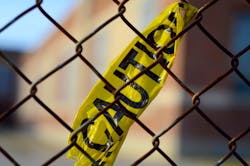The Covid-19 pandemic has forced schools to devote significant resources to student safety from a health perspective, but administrators also must be vigilant about taking steps to ensure that their facilities keep students and staff safe from threats posed by unwanted visitors and other intruders.
Part of an effective plan for creating a safe learning environment for children and educators, the Partnership Alliance for Safer Schools (PASS) says, is to conduct periodic safety drills.
“Drills are common in the school environment, whether in language or math education, sports practice or safety,” the PASS Safety and Security Guidelines for K-12 Schools state. “…School safety drills and exercises are no different. To ensure a safe environment during the school day, common drills repeated during the school year are the accepted practice.”
The most recently updated version of the PASS guidelines was released in fall 2020.
Because of the frequency of violent and sometimes deadly incidents that school campuses have endured in recent years, lockdown drills have become a necessary element of school security.
“Whether in a school, business or other public space, best practices now dictate having a lockdown protocol as the major component of an effective safety plan when escape is not possible,” PASS says.
PASS says schools should use the term “lockdown drill,” which encompassing more situations than “active shooter drill.”
“A lockdown should be looked at as an active threat situation, or a situation that presents an immediate and ongoing danger to the safety of students, staff and visitors,” the guidelines say. “In addition to individuals using firearms (active shooters), other types of weapons and erratic behavior can also create active threat (lockdown) situations.”
But even though the need for lockdown drills may stem from potential incidents of violence, the drills themselves do not need to include violence.
“Some have called for making these drills realistic,” PASS says. “However, schools are not set on fire to practice fire drills. Firefighters do not run through the building yelling at students and staff during fire drills….Drills should be conducted in an educational way—there is no need for violent simulations.
A lockdown drill should teach students and staff members about the options that can be used in an active threat situation, PASS says.
“Students and staff are not always in their classrooms or behind closed doors as they go throughout their busy school days,” the guidelines say. “Because of this, students and staff should be taught additional strategies that go beyond just sheltering in a classroom.”
Among the other shelter options that should be taught: what a staff member or student should do when in a bathroom, cafeteria, or hallway if an active threat arises.
“This is where evacuation (evade) or distraction (defend) strategies could come into play,” PASS says.
When a lockdown drill occurs at an elementary school, it should be conducted when the majority of the school is sheltered inside and when some classes are outside are at recess. This will enable the staff and students at recess to practice how to safely leave the school grounds.
Students in a secondary school can be taught what do if they are caught in different locations inside and outside their school. Those at recess need to know what their options are outside the building, and they should be guided through the options.
Schools also can provide classroom lessons that offer age-appropriate strategies about the different options that may be available in an active threat situation.
Additional training, such as basic first aid, also should be considered when creating the lockdown drill, PASS says. Many emergency medical responders, the Red Cross and other organizations can provide age-appropriate training for students and staff.
Other PASS recommendations for conducting school safety drills:
- Conduct drills in a way that is educational and involves the practice and testing of established processes, procedures and technologies. They should not involve violent simulations that could be traumatizing.
- Announce drills ahead of time to staff, students and parents. Do not conduct drills in a “surprise” fashion.
- Drills should be short and conducted as quickly and efficiently as possible.
- Conduct drills at varying times of the school day – recess, passing periods and lunch time – and during after-hours activities.
- Debrief staff immediately following a drill and allow them to exchange feedback can be exchanged.
- Conduct at least two lockdown drills each school year.
- Tailor drills to the desired levels of safety awareness for participants; the levels will vary depending on the developmental levels of students and a capabilities and training of staff involved.
About the Author
Mike Kennedy
Senior Editor
Mike Kennedy, senior editor, has written for AS&U on a wide range of educational issues since 1999.
